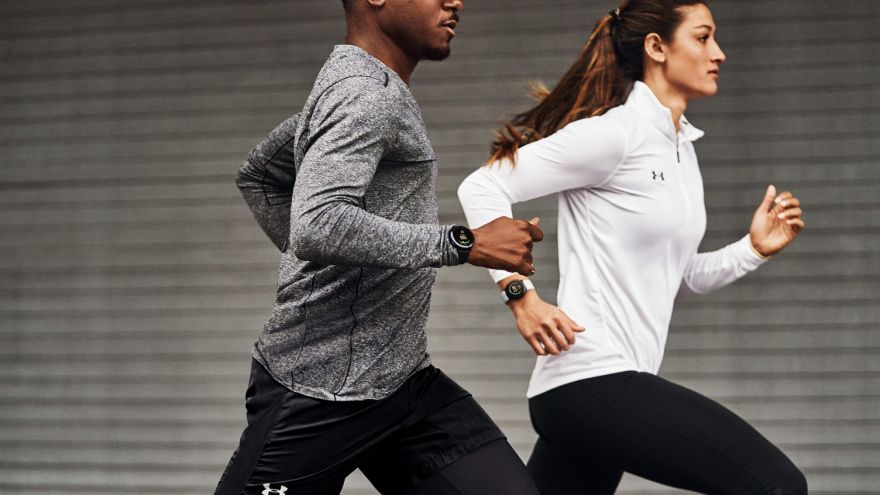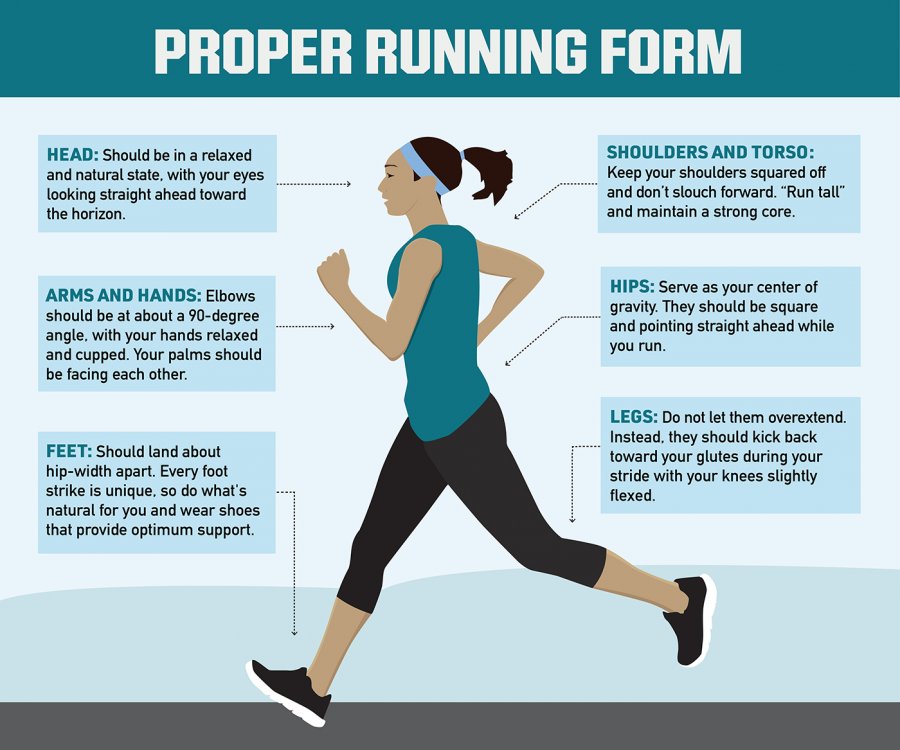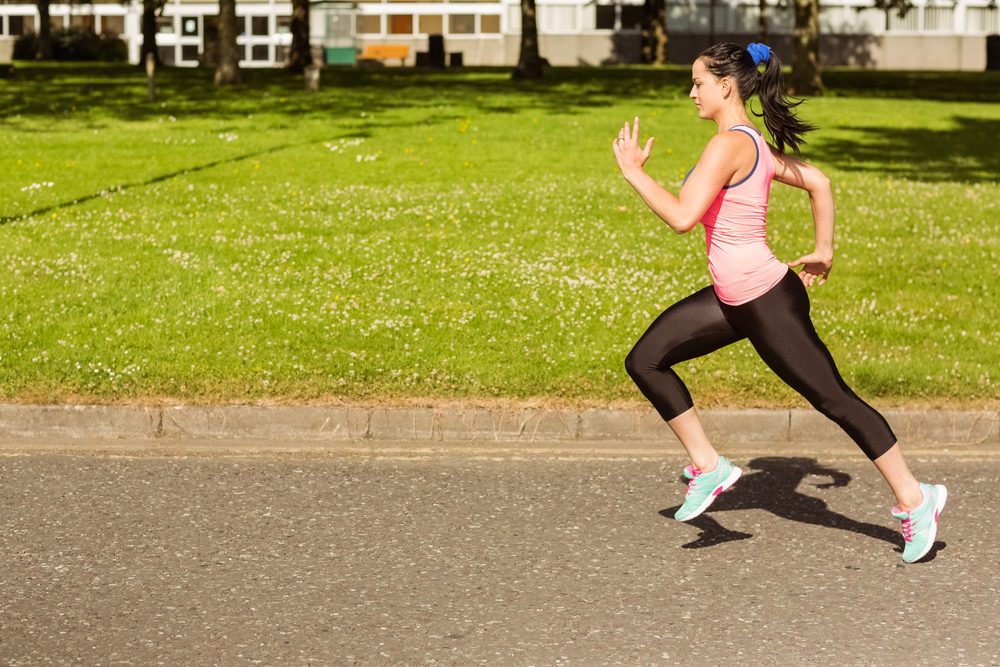Good Running Form VS Bad Running Technique
 Good Running Form VS Bad Running Technique www.walkjogrun.net
Good Running Form VS Bad Running Technique www.walkjogrun.net One aspect of running that many people fail to focus on is running form. Sure, you can muddle through and not focus on form and you will probably get by. But is that what you aspire for yourself? Just getting by?
Most people have goals and dreams. Whether that is how they want to improve as an athlete or to get overall health up to a better place. Focusing on form on a runner may seem like a small thing. However, for most athletes, making some small adjustments to form can result in big improvements.
Common Mistakes “Rookie” Runners Make
When coaches are asked what the most common mistakes new runners make, there are many things that come up in the conversation. When contemplating good running form, one of the top discussion items is that they run too tense.
You should try to relax your upper body so you are not running tense. The more tense your upper body is, the less relaxed of a runner you are. It sounds contradictory to tell you to be “fast and relaxed,” but it really can be done! This includes loosening up your body through your shoulders, neck and even jaw.
People often tend to clench up, especially when they are deep into a challenging workout. This is a tactical error. You want to relax as much as you can. If you slow down a video on exceptional sprinters, you will notice their jaw actually often seems slack. This is because they are running “loose.”

Running without arm control is another mistake. You want to have controlled arms as you propel yourself forward. This means a 90 degree bend at the elbow. It also should have your arms at your sides as you swing your arms forward then back. Something to think about is if you are running strong and fast, as in sprinting, the thumb of your hand should come up near the chin on the “up swing.” On the backswing, your thumb should graze the back of your hip/glute.
If you are on an average run, you likely will not have this complete arm swing. However, you should still be aware of your arms. You do not want to be making errors like crossing your arms in front of you. That is one error many runners make. These lazy arms typically become more pronounced as the runner fatigues.
Often, runners think they need to focus on increasing their stride length to get faster. Actually, you should focus first on cadence if speed is your goal. Cadence is how fast you turnover your legs.
How do you measure cadence? The easy way is to count your steps for 15 seconds. Once you do that, multiply the number you got by 4. If your number is 35, your cadence is 35 x 4 which is 140. Ideally, you want to increase your cadence or leg turnover.
Some coaches say that heel striking is an error in form. Other coaches argue that you strike how you strike and there are no huge benefits in changing what you naturally do. Arguably, a mid-foot strike is the most ideal way for your foot to impact the ground when running. However, it is debatable if that is an important component of proper running form.
Tips For Good Running Form
If you are hoping to improve your running form, there are some easy adjustments you can make right off the bat.
First things first: engage your core. The core is a key component to keeping yourself running strong and upright. If you focus on engaging your core while you run, you are off to a good start! That means tense up your core and focus on keeping your body erect while running. Don’t slouch over, double over, or run with your shoulders hunched.
Equally as important is to maintain good posture while running. This ties directly to the core, in case you have not figured that out. Head back and shoulders level and relaxed, try not to lift your shoulders or tense up. Think about focusing on keeping your body upright and not leaning over as explained above in focusing on your core.

Keeping your neck in a neutral position will help you improve your form. Craning your neck to look up or down both results in uncomfortable running. Remember: run relaxed. You should only be looking down near your feet if running on technical trails. Otherwise, keep your head up and focus slightly ahead.
As mentioned above, thinking about your arms, including how you hold and swing them, will help you to be a stronger runner. Focus on that arm movement!
Don’t Overthink It
While all of this can help improve you as a runner, it is also important not to overthink it. If you are happy with how things are going, you don’t necessarily need to reinvent yourself as a runner.
If you are new to the sport, reading through a few things to help you improve your running form is an excellent planning checklist! However, if thinking about it all raises your anxiety, relax. Even small children run. They just start moving their arms and legs and make it happen.
You can be just like that child. Running along with reckless abandon! Okay, maybe most of us don’t quite run like that. However, you also don’t need to stress about it.
If you have always been a forefoot striker, people may tell you that “toe running” is a bad idea and you should change it. While it is true that toe running can cause injury for some runners, I have been a toe runner my whole life with no ill effects. In fact, I would argue that trying to completely change up how I run at the age of 50 could do more harm than good.
On the other hand, I did recently try to focus on cadence and, guess what? I find myself getting faster! Another thing I think about is how I am holding my body. Knowing that it is normal for people to see a breakdown in form as they fatigue, I think about mine especially when I am doing long mileage. That is another small adjustment that has helped me to evolve as a runner.
The point is that you can make small changes that can make a big difference. But if working on any of these raises your anxiety, don’t worry about it.















